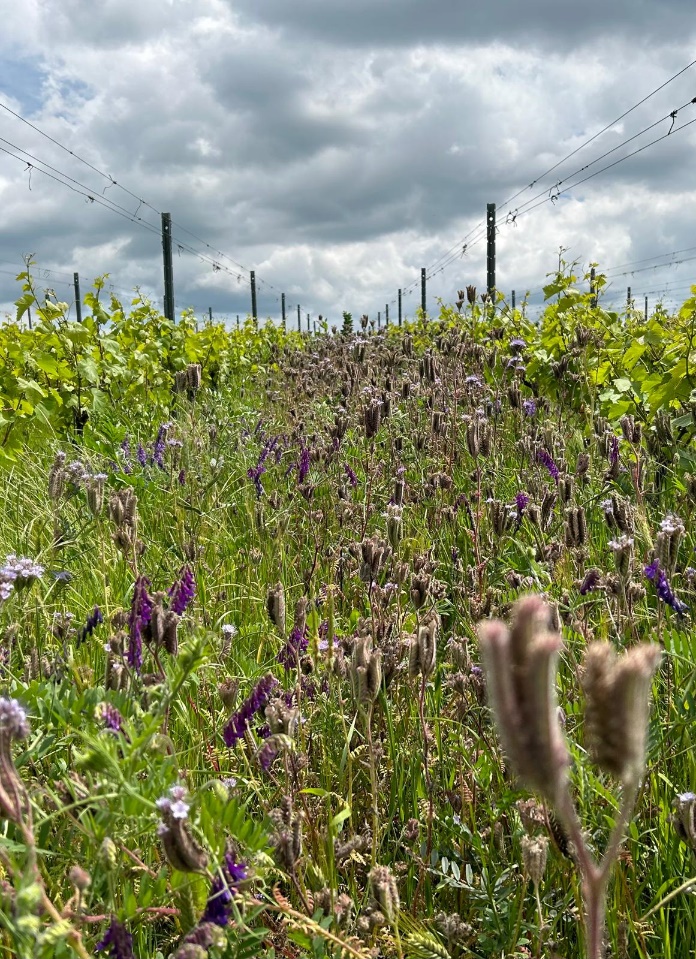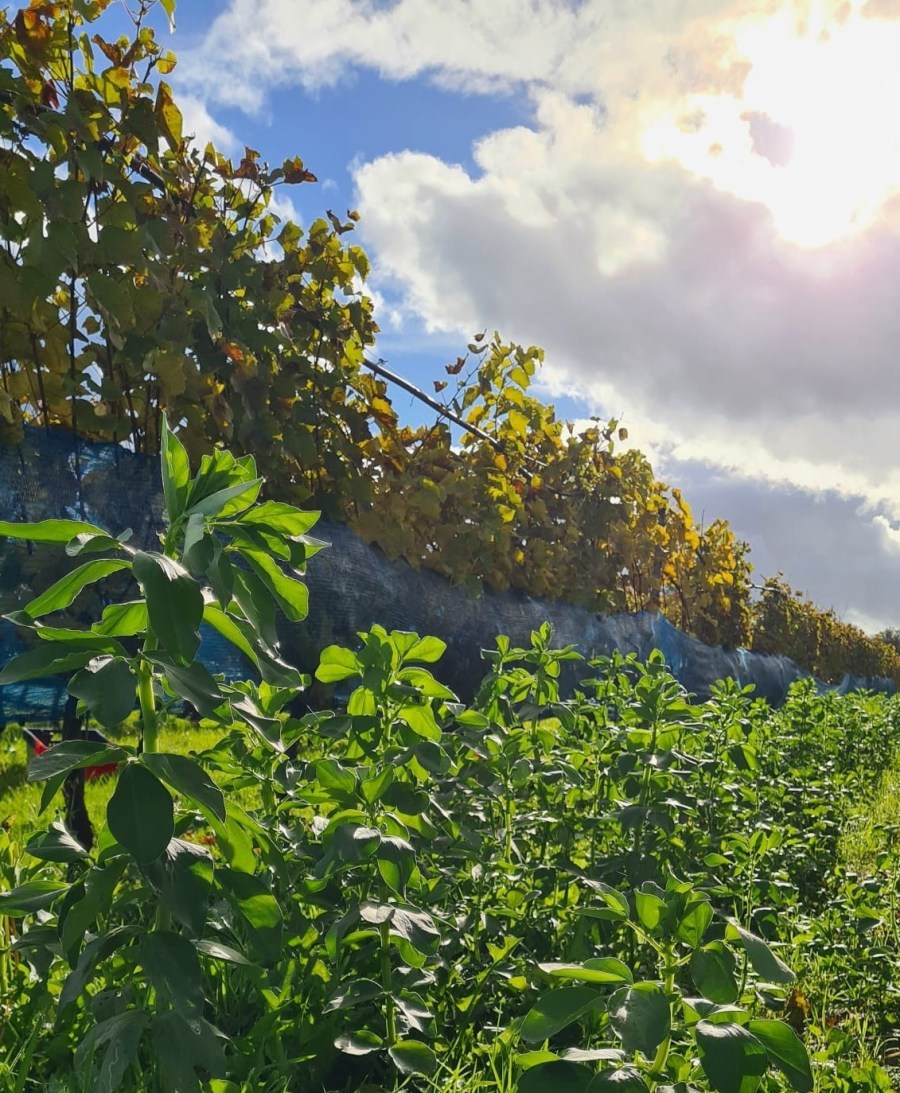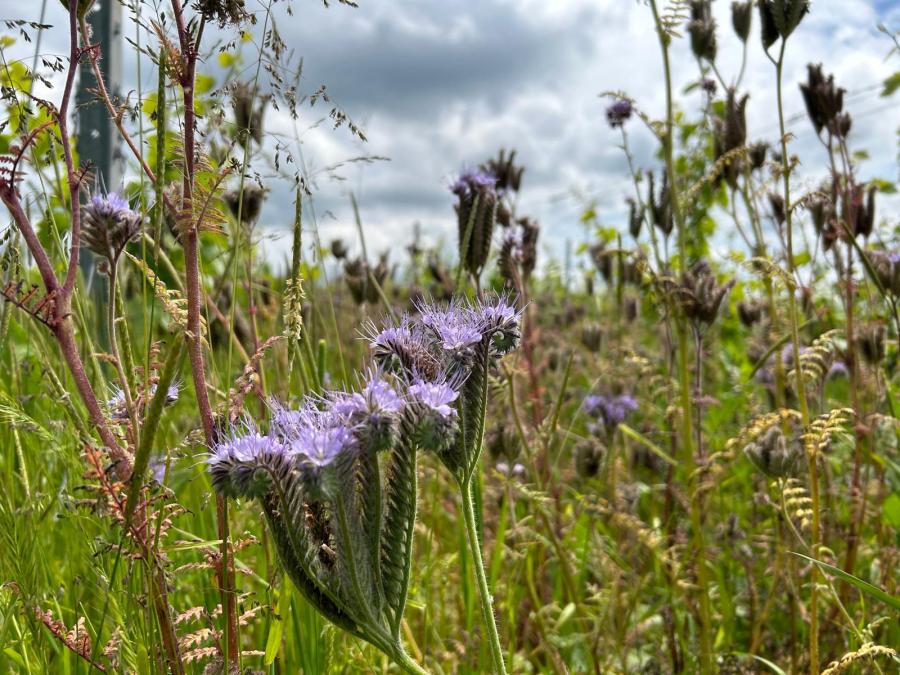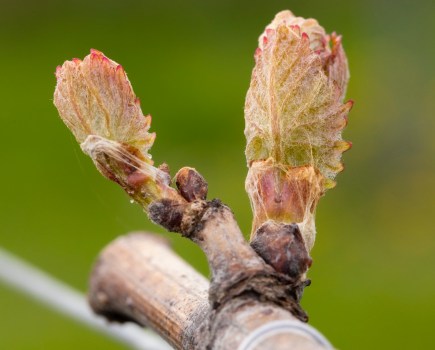With vines only covering approximately 15-20% of the vineyard, exploring these groundcover management opportunities, with their impact on soil health, yields, juice quality and emissions, is important and with limited research in this area, many vineyards are looking for further support.
The project has been delivered by a consortium of participants, with groundcover management trials held in the Kent vineyards at Gusbourne Estate, Chapel Down and NIAB East Malling, cover crop seeds and agronomic advice supplied by the seed merchant
T Denne & Sons, scientific research delivered by NIAB East Malling and the Natural Resources Institute (University of Greenwich) and support by industry consultants and researchers Vinescapes.
The aim of the project was to compare soil health, vine growth and wine quality between a range of inter-row cover crop treatments, as well as different under-vine management methods. The cover crop treatment mixes included phacelia, faba bean, an annual mix of rye and vetch, and a perennial mix containing creeping red fescue and three clover species. The control treatment consisted of alleyways that were maintained as before, with natural and spontaneous vegetation that is regularly mown.
Comprehensive testing has been conducted during the trial, to fully understand the impacts for grape and wine production, including measurements of soil health parameters such as soil organic matter, nutrient content, microbial biomass carbon, water infiltration, compaction, and extractable nitrate; vine performance parameters including canopy volume (LiDAR), leaf nutrient analysis and chlorophyll, flavanol and anthocyanin measurements. Grape and wine analysis was also undertaken with measurements of pH, Brix, tartaric acid, malic acid, PAN, ammonia and YAN. Vines have also been planted at the NIAB EMR Rhizolab to enable future root studies, including vine-cover crop root interactions, and soil sampling at depth.
The project is now in its final six months and before we present the final results, here are some interesting insights (from the project team) into establishing the cover crops:
- Timing is everything – Poor establishment of the cover crops was encountered in the first year of the experiment (2022) due to the extremely hot and dry conditions that prevailed from March onwards. Selecting the planting time is therefore critical and this became easier with more experience of each crop type.
- Competition – Grass competition was higher than expected at some of the vineyard trial sites and we needed to re-establish the cover crop to facilitate the regeneration of the biodiversity both above and below ground.
- More than a year – As the soil condition improved we have seen an increase in cover crop success year after year with the added benefit of the seeds in the soil, be they indigenous or previously planted by the trial, thriving together with the newly planted cover crop.
- Soil types – The effects of cover crops on soil properties are strongly controlled by the soil type. Values can move in different directions after planting the cover crops depending on whether you are in a more clayey or sandy soil.
We are looking forward to analysing and sharing the final results from the project with the UK sector later this year.
For more information please contact info@vinescapes.com.

Chapel Down: Phacelia

NIAB East Malling: Faba Beans
For more like this, sign up for the FREE Vineyard newsletter here and receive all the latest viticulture news, reviews and insight




